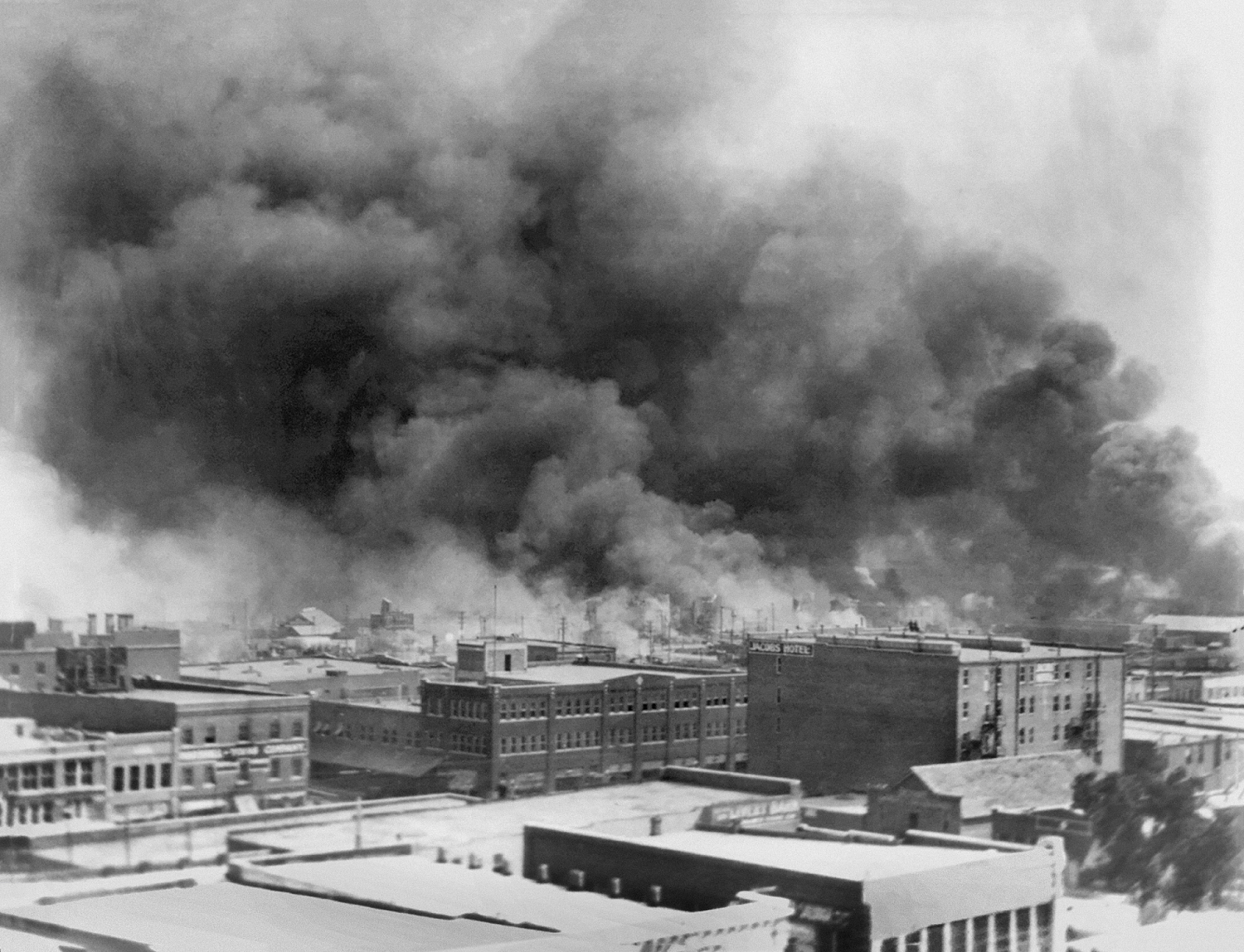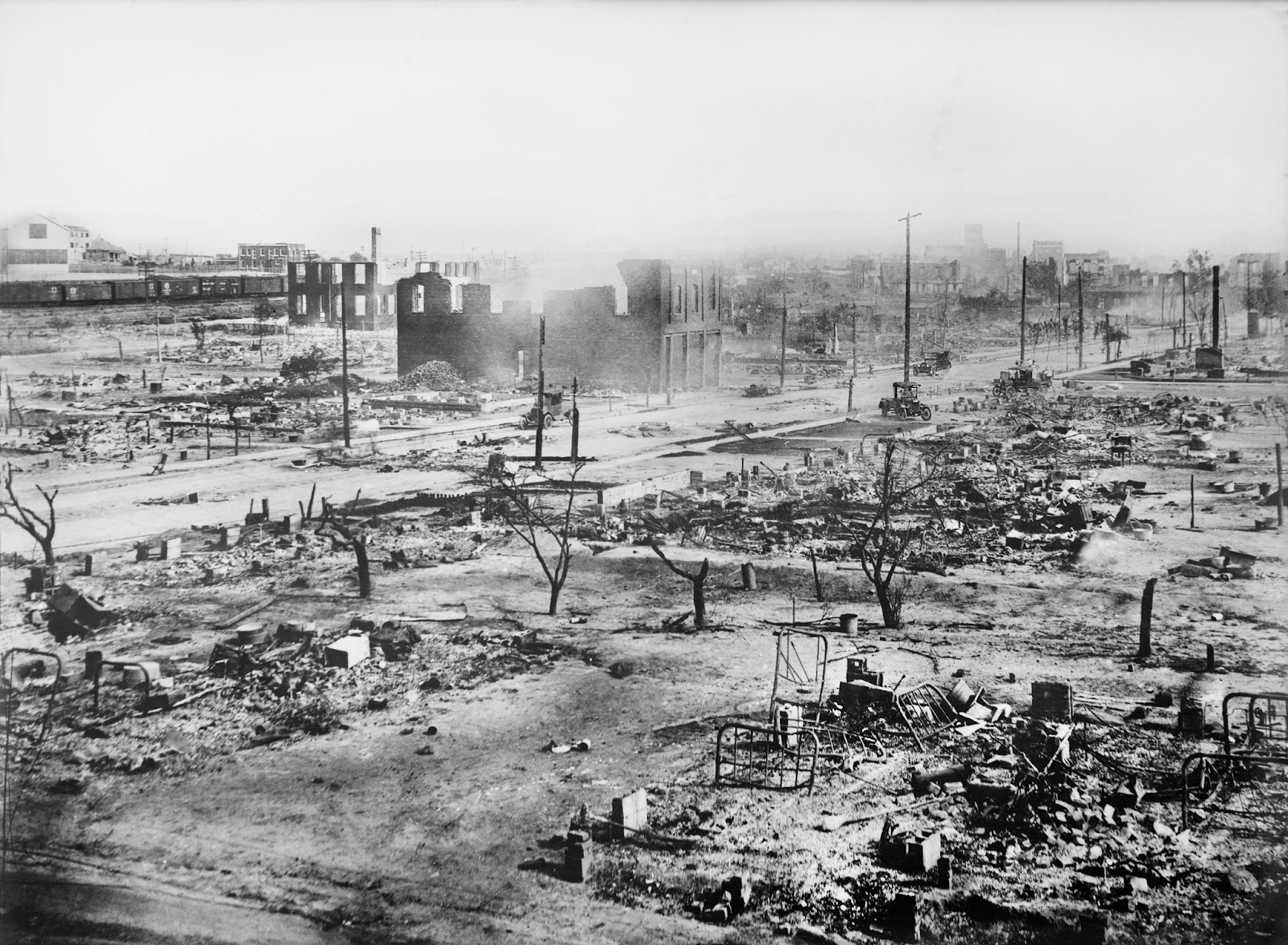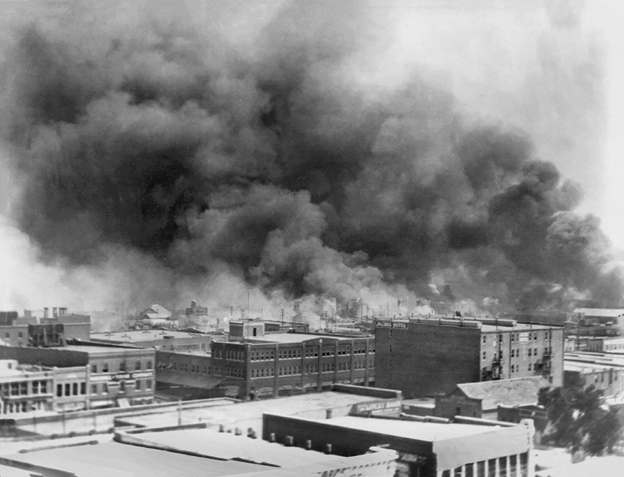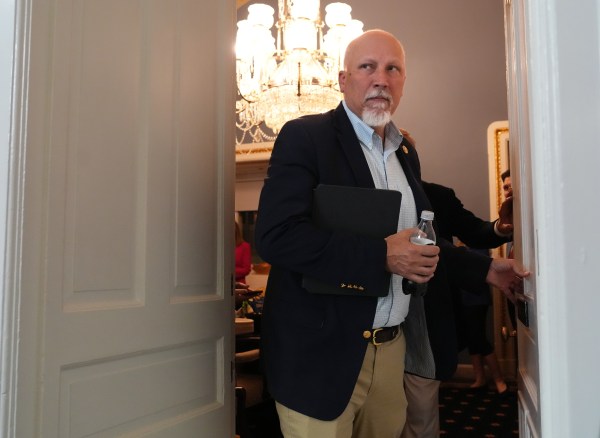How old were you the first time you heard about the Tulsa Race Massacre? I’m ashamed to say that I was in my forties. Some of my readers might be today years old when they learn of one of the most horrific and brutal events in American history. And it didn’t occur in the early days of the republic. It didn’t occur in the midst of the American Indian wars.
It happened 100 years ago this weekend. On May 31, 1921, a 19-year-old black man named Dick Rowland was arrested after an encounter in an elevator with a 17-year-old white elevator operator named Sarah Page. We don’t know definitively what happened in that elevator, but Page apparently screamed, Rowland ran, and word soon spread across town that a black man had been arrested for sexually assaulting a white woman.
As an angry white lynch mob numbering in the hundreds gathered, a small band of 25 armed black men arrived to try to protect Rowland’s life. At the sight of armed black men, a number of white men left to gather their guns, and the white crowd continued to grow. Approximately 75 more black men arrived to help protect Rowland. At around 10:00 p.m., one of the white men demanded that a black World War I veteran surrender his sidearm. He refused, a shot was fired, and immediately a gun battle broke out in the streets–killing people of both races.
As the outnumbered black men retreated, the white mob surged forward into Tulsa’s prosperous Greenwood District, home of Black Wall Street, a thriving neighborhood of black-owned businesses. What happened next is beyond horrifying. The district was set ablaze. In spite of valiant attempts at self-defense, black Americans were shot dead by the dozens (unofficial accounts put the number as high as 300), and there were reports white attackers dropped incendiary devices on the neighborhood from the air. By the end of the massacre an entire neighborhood lay in ruins, black men and women were herded into internment centers, and the dead were buried in mass graves.
This was Greenwood ablaze:

This was Greenwood after the riot:

I would urge you to read the entire report of the 2001 Oklahoma Commission to Study the Race Riot. It contains an hour-by-hour chronology of an urban massacre, and it includes these infuriating words: “Not one of these criminal acts was then or ever has been prosecuted or punished by government at any level, municipal, county, state, or federal.”
In my entire adult life, I don’t think America’s dialogue about race has been as toxic as it is today. Extremists dominate, pushing us into ever-more-polarized ideological corners. If you live in right-wing spaces and spend time talking about contemporary racism or the ongoing, persistent consequences of centuries of slavery, Jim Crow, redlining, and segregation, extremists will quickly label you “woke.” And no one should listen to anyone woke.
If you live in left-wing spaces and you push back against emerging “anti-racist” ideologies that sometimes declare the nation foundationally evil, engage in their own forms of gross racial stereotyping (including unremitting hatred for “whiteness”), and seek to defund and discredit policing itself, extremists will quickly label you “racist.” And no one should listen to anyone racist.
At the center of the conversation is a battle about the past, and it’s not just a battle over what we should remember, but how we should remember it. What is it that defines us as a nation? There are some events that we can’t seem to remember enough—when was the last time you heard anyone say that we pay too much attention to June 6, 1944 and the veterans of Omaha Beach?
Indeed, one of the best things our nation does is remember and honor the men who fought, bled, and died to preserve American liberty. That’s the purpose of this very weekend. The memorials to their sacrifice deservedly and rightfully cover this country. When we look at their courage and valor—and repeat those stories to our children and grandchildren—we aren’t just remembering the past, we’re defining the present. We’re saying this is who we are.
Indeed, we often even derive a sense of unearned pride and self-worth from the sacrifices of our ancestors. We delight in telling about the great-grandfather at Iwo Jima or the great uncle at Midway. My own family’s legacy of service begins in the bitter cold of Valley Forge.
It’s that deep emotional tie to the present that renders battles over our past so bitter and brutal. We’re more than willing to feel pride over the virtues of our ancestors. But when the past is grim, we separate ourselves. We forget. We grow defiant. “How dare you,” we say, “impose any responsibility or accountability on me for something I did not do.”
But how should the people of God view the past? Should we be so defensive? The book of 2 Kings, Chapter 22 gives us part of the answer. If you grew up in church, you’ve likely heard this story. In the 18th year of the reign of Josiah, king of Judah, the king ordered the Temple repaired. During the repairs, the high priest found the Book of the Law. The king’s secretary then read the book to the king.
Josiah’s response is profound. “Go, inquire of the Lord for me,” he says, “and for the people, and for all Judah, concerning the words of this book that has been found. For great is the wrath of the Lord that is kindled against us, because our fathers have not obeyed the words of this book, to do according to all that is written concerning us.” (Emphasis added.)
Josiah perceived God’s present wrath for the kingdom’s past sin—past sin that had a present consequence. There was no sense of defiance. There was no deflection of blame. Instead, as the chapter later describes, he “tore his clothes” and “wept” before God. But he did more than weep. He changed. The king “made a covenant before the Lord, to walk after the Lord and to keep his commandments and his testimonies and his statutes with all his heart and all his soul, to perform the words of this covenant that were written in this book. And all the people joined in the covenant.”
Josiah is not alone. Daniel confessed the sins of Israel’s fathers. In the book of Nehemiah, the Israelites confessed the “sins and iniquities” of their fathers. In the book of Leviticus, God commands the Israelites to “confess their iniquity and the iniquity of their fathers.” In short, we cannot and must not ignore our ancestors’ sins.
American believers should remember and lament the terrible violence of May 31, 1921. We should remember and change. And one thing we should remember is the profound sin of the church. One church that remembers and laments is First Baptist Tulsa, a congregation located just a few blocks from the Greenwood District. It has a prayer room dedicated to remembering the massacre, and its purpose is to “provide a place for our church and our community to explore the history of the Tulsa Race Massacre of 1921 and to prayerfully oppose the sin of racism in our world, in our churches and in our heart.”
It does not flinch from facing Christian complicity. A friend sent me pictures from the walls, pictures of quotes by Christian ministers in the immediate aftermath of the massacre. They’re so grotesquely racist that I hesitate to share any of their words, but these, from the Rev. Harold Cooke, of Centenary Methodist Church, come from a heart of darkness:
There has been a great deal of loose-mouthed and loose-minded talk about the white people of Tulsa being equally to blame with the blacks. This is not true. Any person that makes this assertion makes an assertion that is false to the core. It should be a lesson learned, once and for all that the colored man is a colored man and a white man is a white man, and there can never be anything like social equality between the races. Many negroes realize this and are the better element of the colored race.
And what of First Baptist Church? What did its leaders say? The prayer room contains a placard that humbly and simply says this:
No record exists of what was publicly said by Dr. William O. Anderson, the pastor of First Baptist Tulsa. The church archives are mysteriously silent. However, we have little reason to hope that his statements departed from that of the other pastors that history happened to record.
Thank God that we do not live in the America of 1921. Thank God that we do not have the church of 1921. But we do live in an America that was shaped by 1921. We live with the legacy of 1921. And the posture of the present American church should not be some version of “how dare you try to make me feel bad for crimes I did not commit.”
While the violence in Tulsa was stunning, American history is littered with examples of street battles, racist uprisings, and mass killings. The history of the 1898 Wilmington, North Carolina, massacre and coup, in which a racist mob overthrew the city government, is its own category of chilling. So is the Rosewood Massacre. The list goes on.
It is not “hating America” to acknowledge this is part of our story. It is not unpatriotic to understand that much of our present reality exists because the legacy of past atrocities does not fade as quickly as their memory.
So, what do we do? Perhaps we can take a cue from the way in which we honor the glories of the past, but with a very different emphasis. When it comes to our great moments, we remember them, we celebrate them, and we teach our children to emulate the courage and virtue of our heroes. We cover the countryside with tributes.
If it is right to celebrate, it is also right to mourn. When it comes to our darkest moments, we should remember them, we should lament them, and we should take a page from Josiah and seek reform to ameliorate their effects. Unless we remember our worst moments, we simply can’t truly understand our own nation, nor can we relate to all its people.
Humanity has not transformed its fundamental nature in the last 100 years. A nation full of people no better than us can do great good. A nation full of people no worse than us can commit great evil. Remembering our nation’s virtues helps give us hope. Remembering our sin gives us humility. Remembering both gives us the motivation and the inspiration necessary to repair our land.
One last thing …
The readers’ response to last week’s Jonathan McReynolds song was overwhelming. You asked for more. You’re getting more. This is so so good:







Please note that we at The Dispatch hold ourselves, our work, and our commenters to a higher standard than other places on the internet. We welcome comments that foster genuine debate or discussion—including comments critical of us or our work—but responses that include ad hominem attacks on fellow Dispatch members or are intended to stoke fear and anger may be moderated.
With your membership, you only have the ability to comment on The Morning Dispatch articles. Consider upgrading to join the conversation everywhere.